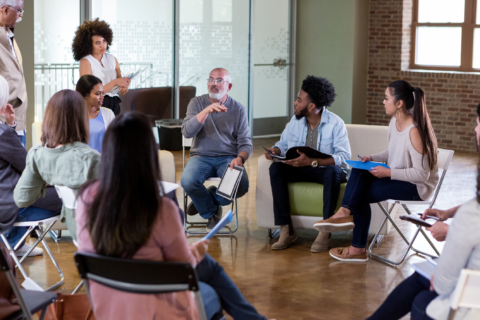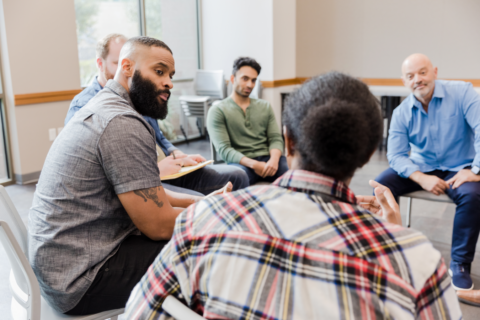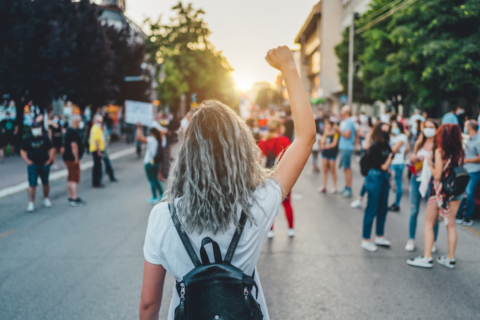Co-authored by Anthony Smith, Executive Director, Cities United
This is one in a series of blogs focused on Gun Violence Awareness in June. To connect with the National League of Cities’ Justice Initiatives Team and other cities doing the work to address violence in their communities, e-mail us at justiceinitiatives@nlc.org.
Summer months are a critical time to bolster support for communities and invest in proven strategies to curb the potential rise in community violence across municipalities. Nationally, we are seeing a decline in certain crimes broadly. However, it is important to continue to implement and expand strategies that further protect residents from harm.
City officials hold the responsibility of working with cross sector stakeholders to ensure the safety of constituents that live in neighborhoods impacted by historical divestment. Getting ahead of predictable public safety trends and patterns that show spikes in violence during the warmer season is key to addressing preventable deaths. Here are a few proven measures localities can consider implementing to foster safer communities:
1. Provide a coordinated system for services that meet comprehensive needs
Cities that develop a coordinated system of services can plug those who may be at the highest risk of exposure to and/or engage in violence with vital resources in an effective way. A coordinated system includes easily accessible support for mental health services, employment and education opportunities, housing, transportation, legal system needs, family support, health, and more. A promising example of a city that offers holistic public safety resources is the City of Lexington. The City of Lexington created the ONE Lexington initiative in 2017 to intentionally coordinate across systems in order to reduce violent crime. The work includes strategic efforts that address prevention, intervention, enforcement, and re-entry initiatives executed through partnerships.
2. Increase street outreach and expand community violence intervention initiatives
Leveraging individuals with lived experience and rapport with communities that experience concentrated violence has proven to be a successful tactic. Municipalities that have invested in hiring outreach specialists and interventionists who are equipped to diffuse conflict that can often escalate if unaddressed are seeing a return on their investments. Increasing and expanding existing capacity during the summer is an effective strategy to get ahead of the potential uptick in violence. The City of St. Louis works with their violence intervention team to establish relationships with people at the center of community violence in their city. The St. Louis Office of Violence Prevention developed a Community Violence Intervention Strategy that focuses on programming in neighborhoods with high needs based on local police data that tracks shooting and violent incident trends over the years. The Show Me Peace program deploys credible messengers to provide ongoing engagement with high-risk individuals. In almost all cities, it’s a small percentage of individuals that drive most community violence. Expanding on work like St. Louis’ Show Me Peace program steers those involved in violence in a more positive direction while reducing harm.
3. Provide paid opportunities to those impacted by violence
Research shows that idle time can have negative implications. Efforts that connect individuals to paid opportunities and employment improve life outcomes for that individual and their community. Opportunities such as summer employment programs have shown to have a positive impact. The City of Newark’s Office of Violence Prevention & Trauma Recovery (OVPTR) is launching a Summer Safety Initiative to provide youth with engaging and fun opportunities. Many families tend to plan their vacations for the summer, however, opportunities to take advantage of the break during the summer are not the same for communities who are disproportionately affected by violence. The City of Newark is set to have targeted programming and events for its residents while also offering workforce-focused training supplemented with social services. The city hired 150 youth who are at the highest risk of violent victimization for their Summer Safe Academy. Newark has also funded 24 youth mentorship organizations in addition to bringing on nine therapeutic and clinical services providers through their OVPTR. Offering opportunities in areas that have limited resources and higher rates of violence is key to decreasing the likelihood of victimization.
4. Create pathways to leadership opportunities for impacted communities to share their voice, experiences and expertise
Hosting consistent and authentic community engagement activities can lead to rapport with communities that have experienced neglect. Creating spaces for authentic dialogue can empower community members to step up and into leadership roles that breed sustained change. The City of Baton Rouge recognizes the community as being at the center of change. Through the Safe, Hopeful, Healthy BR initiative developed in 2020, the city convenes weekly ecosystem meetings every Tuesday evening that assemble community organizations as well as individuals interested in reducing gun violence. The ecosystem meetings create space for not only addressing challenges in Black and Brown communities but also an opportunity to connect around building innovative solutions to community safety. Spaces for members of the community to exchange ideas and generate program and policy solutions furthers ownership of co-producing the kind of conditions residents can thrive in. It also leads to individuals stepping into leadership roles that act towards a shared vision.
5. Extend hours for public spaces for community and youth
Expansion of resources for the public is a measure that eliminates barriers to accessing programming. It is crucial for cities to both extend hours and ensure accessible programming that reflects youth and young adults’ interests. Cities should use data to inform the hosting of youth-focused programs during times when violence typically heightens in communities. The City of Cleveland developed a Summer Safety Plan that includes the launch of CivicRec, a platform that catalogs programming and resources. The virtual platform is designed to decrease barriers to access and serves as a one-stop destination for youth programming resources. Innovative solutions like this can plug youth into engaging opportunities and buffer community violence.
Cities can take localized action to implement strategies that build upon protective factors from violence. Ensuring individuals have resources, support and agency yields community safety. City-wide plans that include partnering with outreach workers and interventionists to do targeted outreach on blocks that are experiencing high levels of violence have proven to effectively reduce harm. Summer months are a time of joy for youth and their families, and cities have promising examples to ensure it is also safe for everyone to experience.
Browse Cities United Resources
Access additional tools to support violence reduction, collaborative change-making, and building safe, healthy, and hopeful communities.








